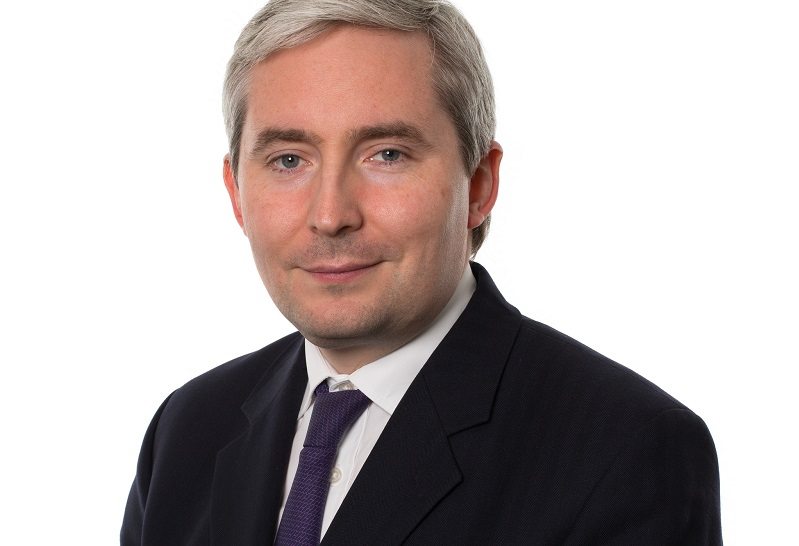On the central bank’s bond buying programme, Alex Brazier, executive director for financial stability strategy and risk at the Bank, argued a lot of yield compression occurred outside the period of purchases.
“While there is a range of – uncertain – estimates, it’s clear that QE has had some effect on a spectrum of asset prices, including corporate bonds. That was, of course, its intention,” Brazier said this month in a speech to the London School of Business asset management conference. But he warned fixed income managers against focussing on the Bank’s bond-buying programme while ignoring risks elsewhere in the market.
In the UK, Brazier noted, corporate debt is growing at an annual rate of 6.2%, while corporate bonds held in open-ended funds in the UK and the euro area had grown 70% since the financial crisis. Corporates are now equally likely to borrow from markets than banks.
He raised concerns about recent performance of high yield providing a distorted view of risk in the asset class, not to mention the liquidity mismatch between open-ended funds and corporate bonds in stressed market conditions.
Reducing risk
Donald Phillips, co-manager on the Liontrust global fixed interest team, says the comments make sense for a regulator with its eye in the macro prudential cycle.
Phillips says in many ways the Brazier speech is asking whether the bond market is making sensible asset allocation decisions.
“Central bankers have manipulated this cycle for a long time. Right now is not the point in the cycle to be reaching for yield. We can find examples of interesting companies, we can stock pick, but we are not looking to fill the portfolio with what you might describe as the higher risk parts of the corporate bond market.”
Phillips is currently developing Liontrust’s global strategic bond strategy investing in G7 government and corporate bonds.
Dumb money
Discussing the compression of yield, Shalin Shah, co-manager on the £1.2bn Royal London Corporate Bond fund, described it as a continuing trend with BBB issues compressing by around 0.1% more than single, double or triple-A bonds in the last year.
Shah also suggested the market now included a lot of ‘dumb money’ that active managers can take advantage of.
“There has been a rise in money that seeks to find a home in capital markets without any real thought process – passive mandates, ETFs. If a bond has a credit rating and is of a size that suits the index, then there will be a range of buyers regardless of the credit risk it imposes on the end user.”
He noted that the easy credit conditions identified by the Bank can make leveraged takeovers easier and impact bond investors.
“If you don’t have any protection against that in the form of covenants or security over specific asset pledges that type of risk is increasing. We have a higher weighting to higher covenanted secured debt which protects against this. In the wider market it is only 15%. Our fund will have three times that at least.”
Forced buyers
Shah said bond managers can take advantage of a market with any kind of forced buyer or the possibility of it, citing the example of O2 parent Telefonica, which saw spreads tighten when Brexit QE was announced but then widen when it didn’t make the Bank of England’s buy list.
He added: “You still have a situation of investors looking to push money towards bonds with certain characteristics. So if it’s credit rating is ‘x’, and it over £250m, there will be buyers of that sort of debt.
“There are opportunities for investors looking wider than the standard indices say where a bond is £240m and shy of the index size, we can get higher spreads for exactly the same credit risk.”
He said spreads have come in a long way, but that longer term history suggests that in investment grade markets you only need 30 to 40 bps to protect against default.
Defaults
However, the lower incidence of defaults, has created a bit of ‘false confidence’, Shah said.
“I would argue that as prices go up and investors continue to direct flows, there is more of a dislocation between what is a good bond and what is an unattractive bond. That is a good opportunity for an active investor. It is even stronger at the short end. There has been a lot more money flying to zero to five year corporate bonds. As a bond goes from six to under five years you see some performance. There appear to be forced buyers.”
Phillips added that an analysis of default spread premia against an historic five year default scenarios shows CCC and to a lesser extend single B looking expensive. In the worst care CCC loses a lot of money. However, the BB spread premia is not suggestive of bad risk pricing and BB’s make up almost 75% of European High Yield market and 45% of the US HY market.
“The actual default spread premia is paying enough. That is where we see value. Our global high yield strategy is likely to be in double Bs. What’s the summary? Yes yields are low, but the spread premium isn’t so bad.”
Phillips added Liontrust wants its clients to know high yield is more like equities in terms of risk return.
“If there are people invested in high yield right now who don’t understand that there could be some volatility ahead, then they should be out of the asset class. If there is a period of volatility they should not decide that is the moment to exit. It is hard to avoid a period of stress where spreads spike in an over the counter traded market place. We want clients to understand risk reward and how our portfolios are positioned.”









